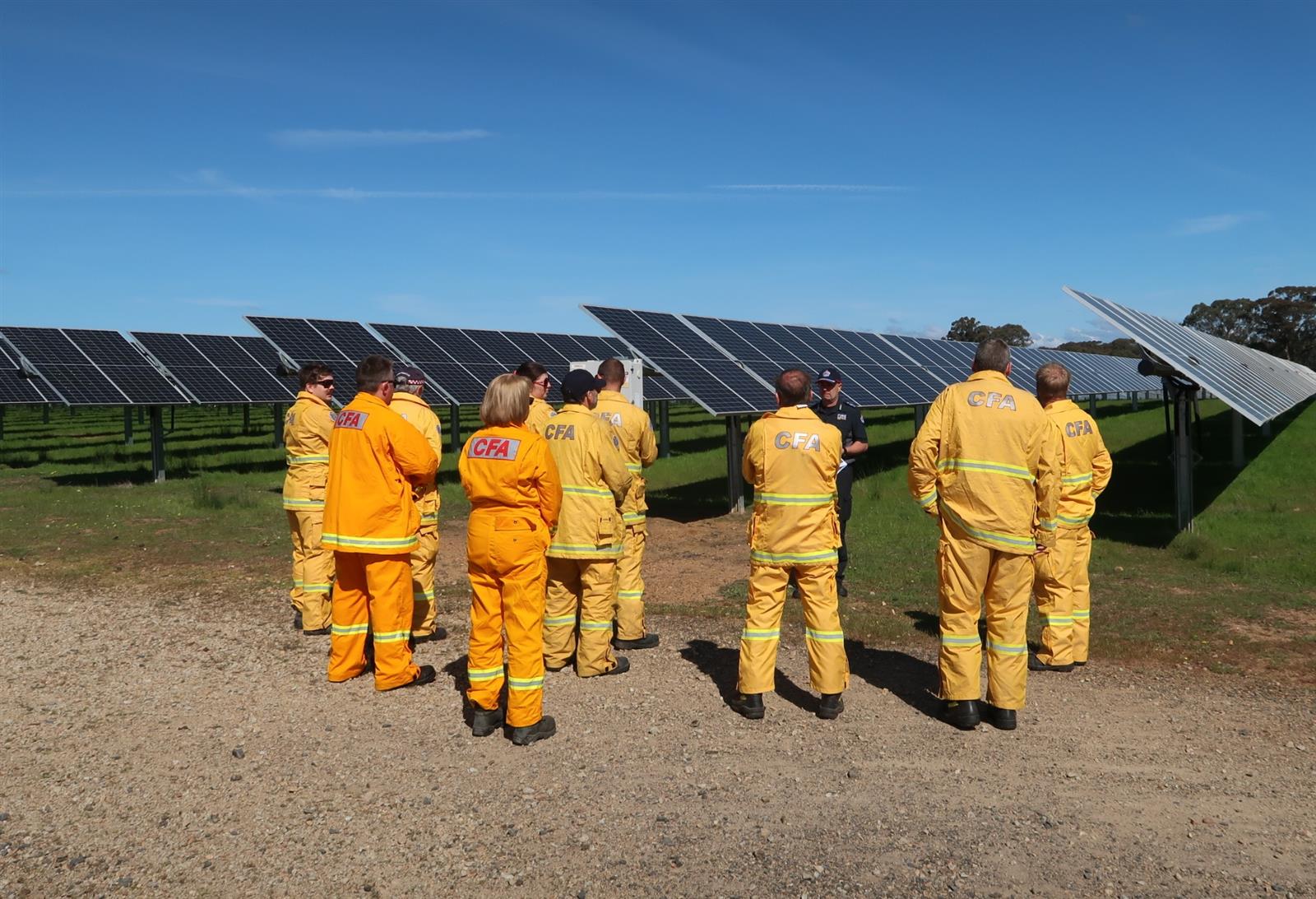
Across the state we are seeing the number of renewable energy facilities increase as part of the Victorian Government’s sustainable energy policies.
CFA has developed operational procedures for response and continues to review and refine them to respond to emergencies at renewable energy facilities. Our operational leaders work closely at a local level to ensure brigades and volunteers are familiar with any renewable energy development and given the training to support this.
CFA and other government agencies engage with the operators of renewable energy facilities about prevention, including appropriate maintenance, vegetation clearing, provision of firefighting water and the preparation of emergency management plans.
We have also developed Australia’s first guidelines for the design and construction of renewable energy facilities.
CFA firefighters are highly trained to manage a range of hazards and risks when responding to emergency situations and have been doing so for years. Fire safety is one of the key considerations for communities when a renewable energy facility is proposed.
CFA’s Specialist Risk and Fire Safety Unit (SRFSU) works with regulators and industry to ensure that fire risk management is considered in the design and operation of renewable energy facilities.
The CFA Design Guidelines and Model Requirements for Renewable Energy Facilities, developed by the SRFSU, contains CFA’s expectations for fire risk management in design and operation.
What is CFA’s role in renewable energy developments?
CFA has responsibilities for the prevention and suppression of fires which supports community and emergency responders’ safety. The role of the SRFSU is to advocate that developments proposed in CFA areas are located, designed, constructed and operated as safely as possible.
The SRFSU works closely with the regulators, designers and operators to ensure that renewable energy facilities are as safe as possible for emergency responders.
How does CFA manage risks to communities and firefighters at renewable energy facilities?
The SRFSU provides advice and recommendations to the Department of Transport and Planning (DTP) via the provisions in the Planning and Environment Act 1987. The Act enables CFA to be notified of renewable energy facility applications received by DTP and allows 14 days for CFA to respond.
Through this process, hazards and risks are identified and permit conditions proposed to DTP to compel applicants to develop risk management plans, fire management plans and emergency plans in conjunction with CFA, to the satisfaction of the responsible authority (DTP/councils).
Where a permit is granted and CFA’s conditions are applied, the SRFSU proposes specific control measures based on the risk profile. This may include modifications to facility design, the provision, location and quantity of fire water supplies/hydrants, suitable fire vehicle access, fire breaks, vegetation management and the provision of emergency information. The risk controls are refined in conjunction with the SRFSU, which engages with internal stakeholders throughout the detailed design process.
When renewable energy facilities are operational, the SRFSU relies on districts and brigades to pass on details of any fire safety concerns. This enables intervention by the SRFSU and local council to enforce the conditions of the planning permit (such as vegetation management), or advocate for the issuing of a Fire Prevention Notice.
What about neighbourhood batteries?
There is no formal planning mechanism for CFA to be notified about proposed neighbourhood (community) batteries. CFA encourages neighbourhood battery proponents and owners to engage with the SRFSU to ensure that fire safety and safe emergency response is considered in the design and operation.
High voltage transmission lines
After renewable energy has been generated it needs to travel from the facility to the community that uses this power. Renewable energy facilities will operate in areas that do not currently have transmission lines, and this will require new transmission lines to be constructed.
The Victorian Government has established a technical reference group for each of the transmission line projects. The groups will consider the risks associated with these projects and provide advice and recommendations to the government. CFA is a member of each group and will advise the project about bushfire risk in the area.
| Submitted by |
News and Media |